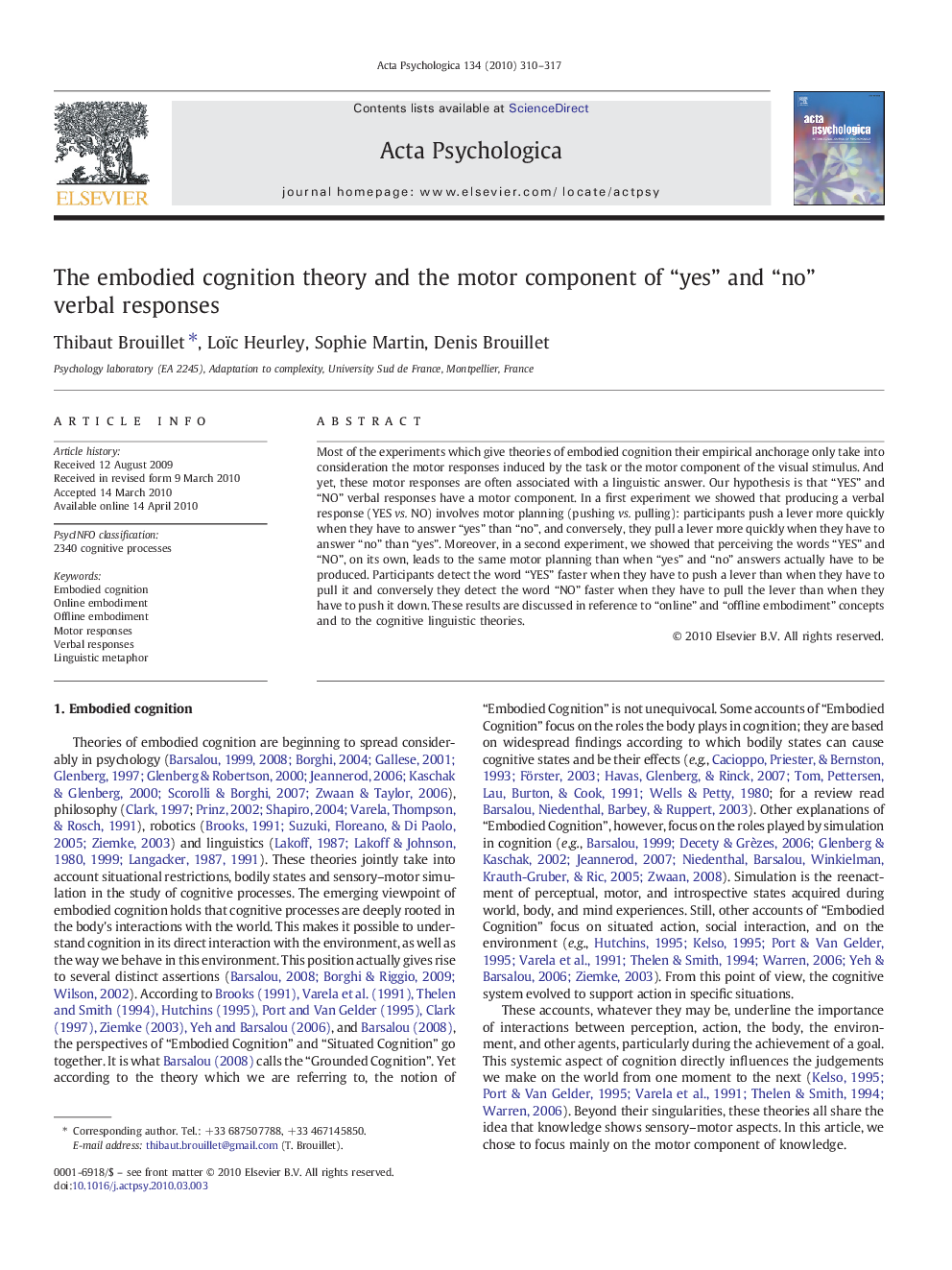| Article ID | Journal | Published Year | Pages | File Type |
|---|---|---|---|---|
| 920075 | Acta Psychologica | 2010 | 8 Pages |
Most of the experiments which give theories of embodied cognition their empirical anchorage only take into consideration the motor responses induced by the task or the motor component of the visual stimulus. And yet, these motor responses are often associated with a linguistic answer. Our hypothesis is that “YES” and “NO” verbal responses have a motor component. In a first experiment we showed that producing a verbal response (YES vs. NO) involves motor planning (pushing vs. pulling): participants push a lever more quickly when they have to answer “yes” than “no”, and conversely, they pull a lever more quickly when they have to answer “no” than “yes”. Moreover, in a second experiment, we showed that perceiving the words “YES” and “NO”, on its own, leads to the same motor planning than when “yes” and “no” answers actually have to be produced. Participants detect the word “YES” faster when they have to push a lever than when they have to pull it and conversely they detect the word “NO” faster when they have to pull the lever than when they have to push it down. These results are discussed in reference to “online” and “offline embodiment” concepts and to the cognitive linguistic theories.
